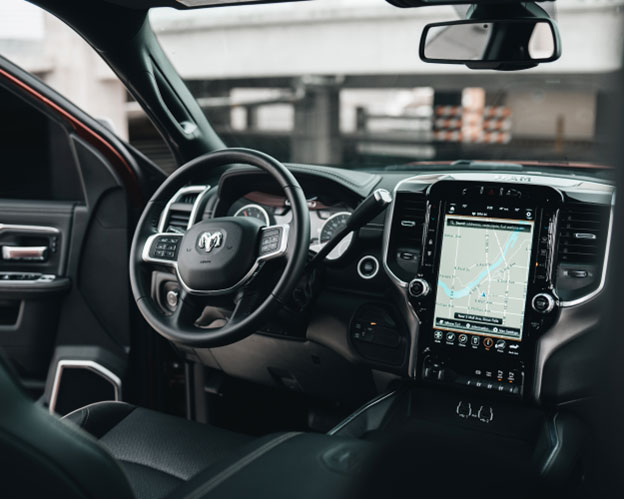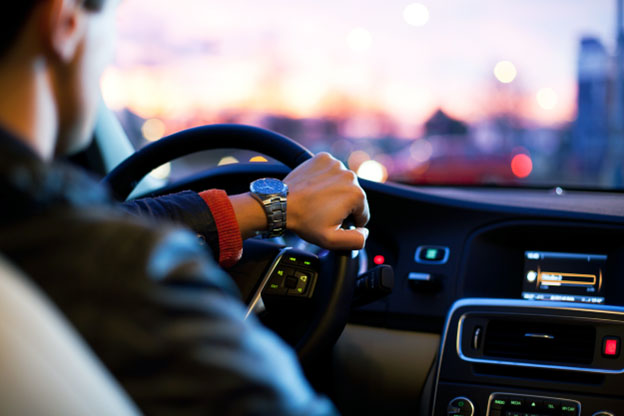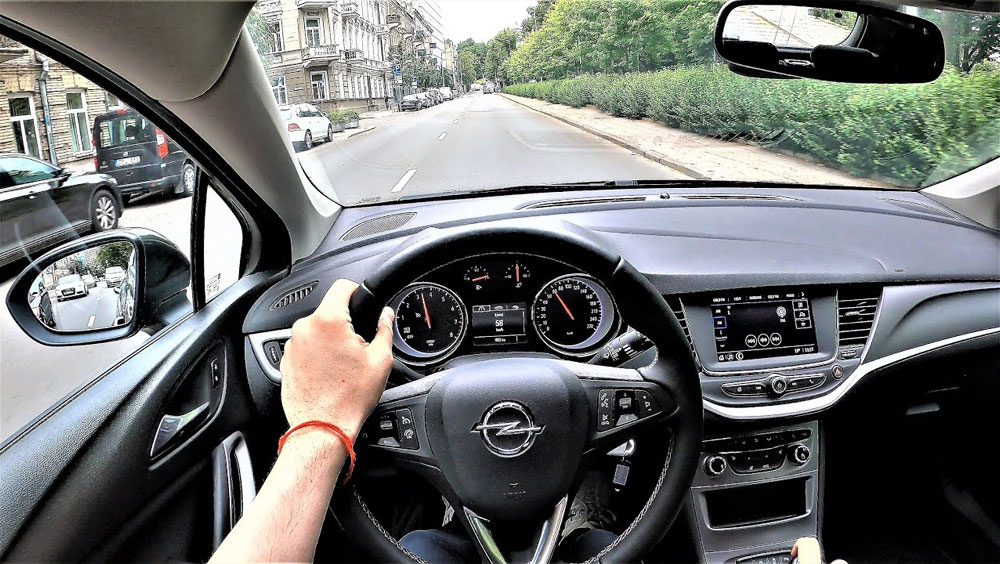Cruise control is an increasingly popular feature on many modern vehicles, allowing drivers to set the speed of their vehicle and maintain a consistent level of acceleration. The idea of cruise control is to reduce the amount of time that a driver has to use the accelerator. As a result, many believe that it can help drivers save money on fuel costs by increasing their vehicle's fuel efficiency.

How Cruise Control Works
Setting and Maintaining Speed
Cruise control is a feature in vehicles that helps drivers set and maintain a specific speed while driving. By engaging cruise control, the driver can set their desired speed using the controls on the dashboard. Once the speed is set, the cruise control system takes over and ensures that the vehicle stays at a constant speed.
Cruise control uses electronic sensors to monitor the vehicle's speed continuously. These sensors detect any slight variations in speed or changes in road conditions. If the vehicle starts to slow down, the cruise control system automatically adjusts the throttle position to provide enough power and regain the desired speed. Similarly, if the vehicle starts to speed up, the system reduces the throttle position to slow the vehicle down.
By keeping the vehicle at a steady pace, cruise control helps to reduce fluctuations in acceleration. This means that drivers do not need to constantly adjust the gas pedal to maintain their desired speed, ultimately leading to smoother driving and improved fuel efficiency. Avoiding rapid accelerations and unnecessary speed fluctuations also helps to minimize fuel consumption and maximize the vehicle's gas mileage.
Minimizing Speed Variations
Cruise control is a beneficial feature in vehicles that helps to maintain a steady pace while driving. By setting a desired speed, drivers can engage cruise control and allow the system to regulate the vehicle's speed automatically. This eliminates the need for constant adjustments on the gas pedal, resulting in a smoother and more consistent driving experience.
One of the major advantages of cruise control is its potential impact on reducing fuel consumption. By minimizing speed variations, the system helps to optimize fuel efficiency. Rapid accelerations and unnecessary speed fluctuations can lead to increased fuel consumption. However, cruise control ensures a more efficient use of energy by maintaining a steady speed and avoiding unnecessary changes in acceleration.
When driving at a consistent speed, cruise control helps to maximize the vehicle's gas mileage. Fluctuations in speed can significantly impact fuel economy, and by avoiding these fluctuations, cruise control allows for more efficient fuel consumption. This is particularly beneficial when driving on flat roads or highways, where maintaining a steady pace can lead to a more fuel-efficient trip.

Benefits and Considerations
Consistency in Acceleration
Consistency in acceleration is a key factor in saving gas when using cruise control. By avoiding sudden acceleration changes, cruise control helps to optimize fuel efficiency and minimize fuel consumption. When driving without cruise control, it's easy to inadvertently vary your speed, especially in heavy traffic or stop-and-go situations. These fluctuations can lead to inefficient fuel consumption as the engine has to work harder to accelerate and decelerate frequently.
Cruise control allows you to set your desired speed and maintain it consistently, eliminating unnecessary speed changes. This constant speed helps to keep your engine operating at its most fuel-efficient range, resulting in savings at the gas pump. Additionally, maintaining a steady speed reduces the need for rapid accelerations, which can consume more fuel.
However, there are scenarios where cruise control may not be as effective. In situations where road conditions are poor or there are frequent obstacles, it's important to be prepared to override the system and take control of the vehicle. Cruise control should only be used in safe driving conditions, where you can maintain a steady speed without compromising safety.
Flat and Smooth Roads
Cruise control is particularly effective on flat and smooth roads due to the consistent speed. On these types of terrains, cruise control allows you to set your desired speed and keeps it steady throughout your journey. This constant speed leads to improved fuel efficiency, ultimately resulting in savings at the gas pump.
Flat roads present minimal variations in elevation, which means your vehicle can maintain a steady pace with little need for accelerating or decelerating. Cruise control eliminates unnecessary speed changes and helps optimize fuel consumption. By keeping your engine operating at its most fuel-efficient range, cruise control can have a positive impact on gas mileage.
Smooth roads, without frequent obstacles, also provide an ideal environment for cruise control. With fewer interruptions and the ability to maintain a consistent speed, cruise control reduces the need for rapid accelerations, which can lead to increased fuel consumption. By eliminating sudden bursts of speed, cruise control helps you drive in a more fuel-efficient manner.
Fuel Efficiency Tips
In addition to utilizing cruise control on flat and smooth roads, there are several other fuel-efficient driving techniques you can employ to save gas and maximize your vehicle's fuel efficiency. Here are some additional tips:
Maintain appropriate tire pressure: Underinflated tires create more rolling resistance, which requires the engine to work harder and use more fuel. Regularly check your tire pressure and inflate them to the recommended level to reduce fuel consumption.
Reduce idling time: Unnecessary idling wastes fuel. If you anticipate being stationary for more than a minute, it's more fuel-efficient to turn off your engine and restart when you're ready to move again.
Minimize the use of air conditioning: Running the air conditioner puts an extra load on the engine and increases fuel consumption. Opt for using the air vents or open windows when possible to save fuel.
Remove unnecessary items: Carrying excess weight in your vehicle, such as sporting equipment or tools, can decrease fuel efficiency. Remove any unnecessary items from your car to reduce drag and save on fuel.

Myths and Misconceptions
Fuel Economy vs. Comfort
When it comes to fuel economy, many drivers assume that using cruise control will always result in better gas mileage. However, this may not always be the case. While cruise control can help maintain a consistent speed, there are potential trade-offs to consider.
One of the main trade-offs is the comfort of the ride. Cruise control is designed to maintain a steady speed, which can be beneficial in terms of fuel efficiency. However, it may not take into account road conditions, traffic flow, or other external factors. For example, on hilly terrain or in heavy traffic where constant adjustments are required, cruise control can actually lead to unnecessary acceleration and deceleration, negatively impacting fuel economy.
Another factor to consider is driver behavior. When using cruise control, some drivers become less attentive and engaged on the road. This can result in a loss of situational awareness, potentially compromising safety. In contrast, manually adjusting the speed allows drivers to respond to changing road conditions and traffic flow, which can result in better fuel efficiency.
Vehicle Type and Efficiency
When it comes to fuel savings, the type of vehicle and engine can play a significant role. Smaller vehicles, such as compact cars or hybrids, generally have smaller engines that require less fuel to operate. This means that even without cruise control, they may already have higher fuel efficiency compared to larger vehicles.
However, cruise control can still provide benefits for smaller vehicles. By maintaining a consistent speed, cruise control helps to mitigate unnecessary acceleration and deceleration, resulting in more fuel-efficient driving. This is particularly helpful on highways or flat roads where constant speed can be easily maintained.
On the other hand, larger vehicles, such as SUVs or trucks, often have larger engines that consume more fuel. In these cases, cruise control can still be effective in improving fuel efficiency by preventing aggressive driving habits, such as rapid acceleration or constant changes in speed.
Conclusion
In conclusion, cruise control can be an effective tool for saving gas and improving fuel efficiency, but it is important to consider several factors.

Firstly, the type of vehicle plays a significant role. Smaller vehicles can benefit from maintaining a consistent speed, thus reducing unnecessary acceleration and deceleration. On the other hand, larger vehicles, such as SUVs or trucks, can still benefit by avoiding aggressive driving habits.
Secondly, driving conditions should be taken into account. Cruise control is most effective on highways or flat roads where a constant speed can be maintained. In stop-and-go traffic or congested areas, it may not provide as much of a fuel-saving advantage.
Lastly, drivers should be mindful of their overall driving habits. Avoiding rapid acceleration, constant speed changes, and aggressive driving can significantly improve fuel efficiency, even without relying solely on cruise control.
To achieve optimal fuel efficiency, it is essential to consider these factors and use cruise control judiciously. Being mindful of driving conditions, vehicle type, and overall driving habits will ultimately help save gas and reduce fuel consumption in the long run.


